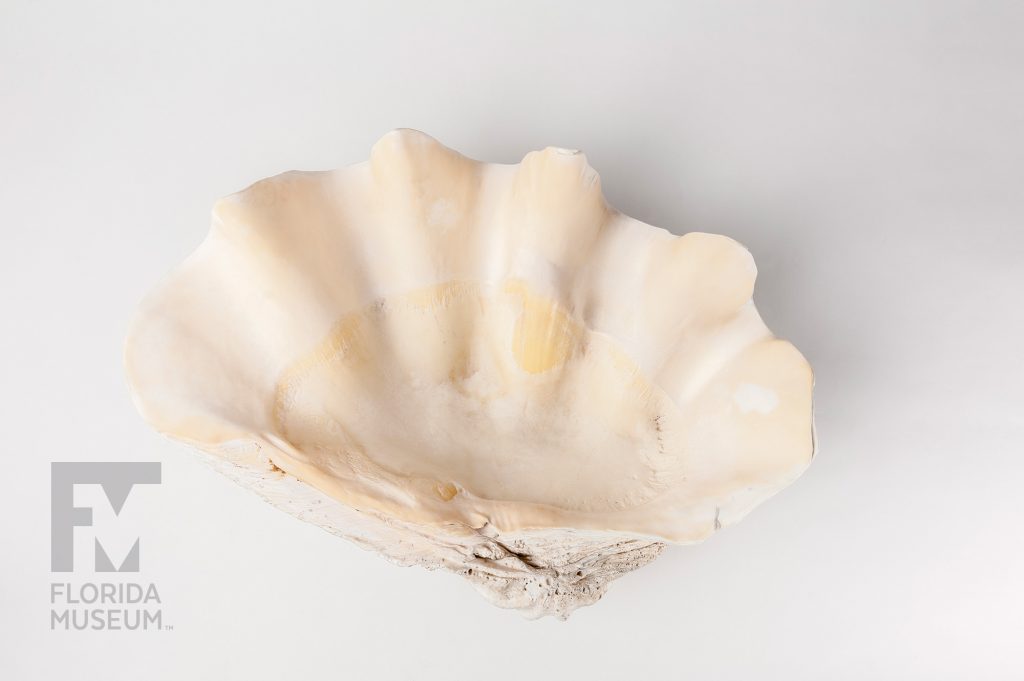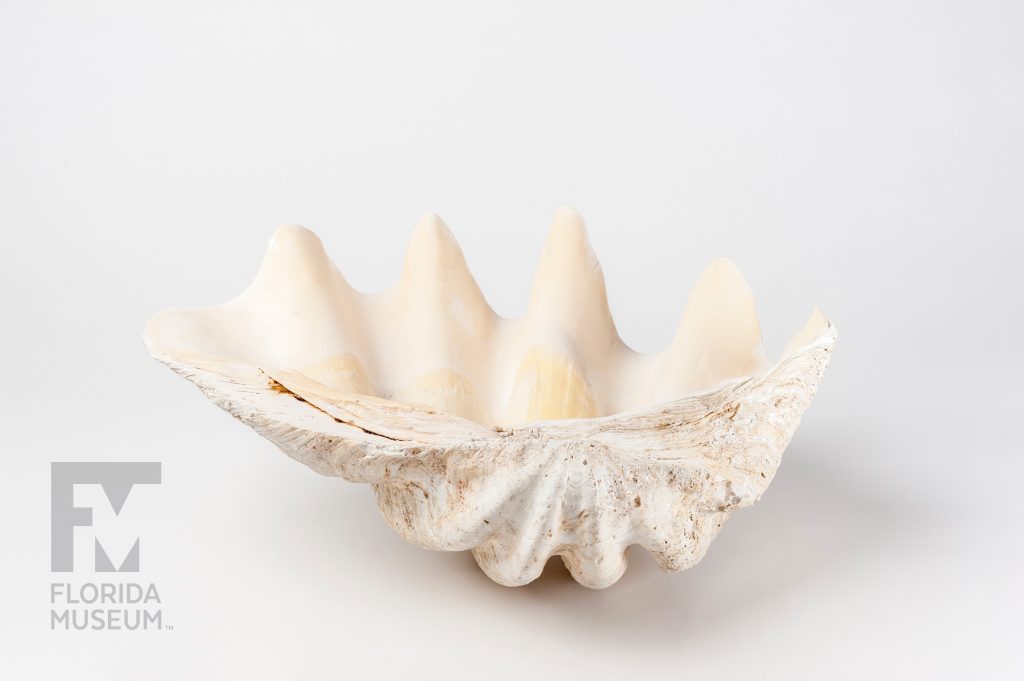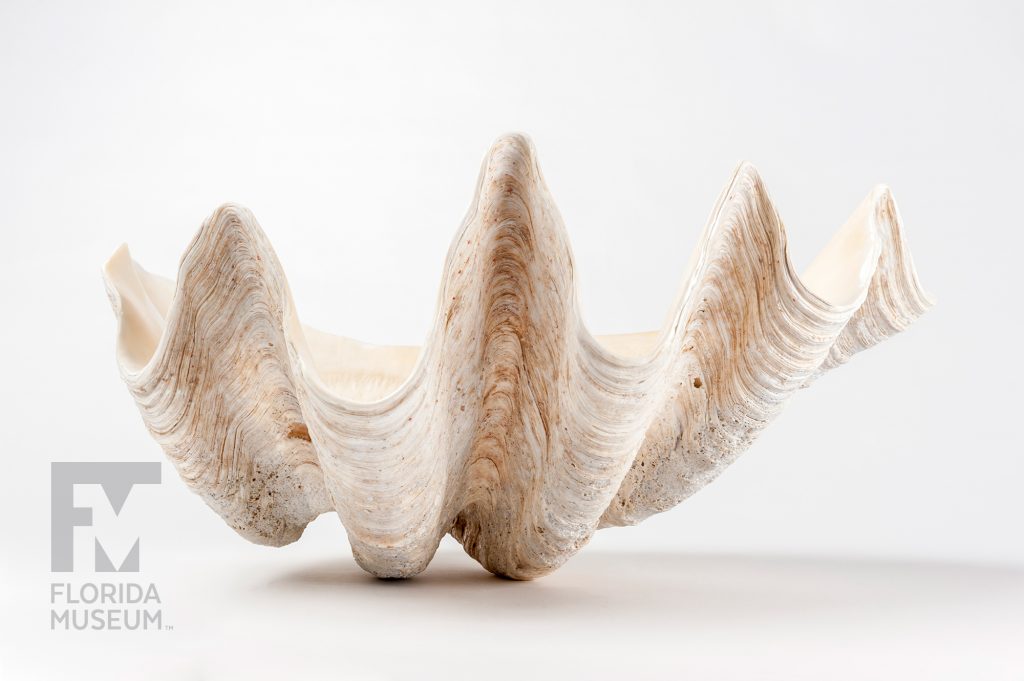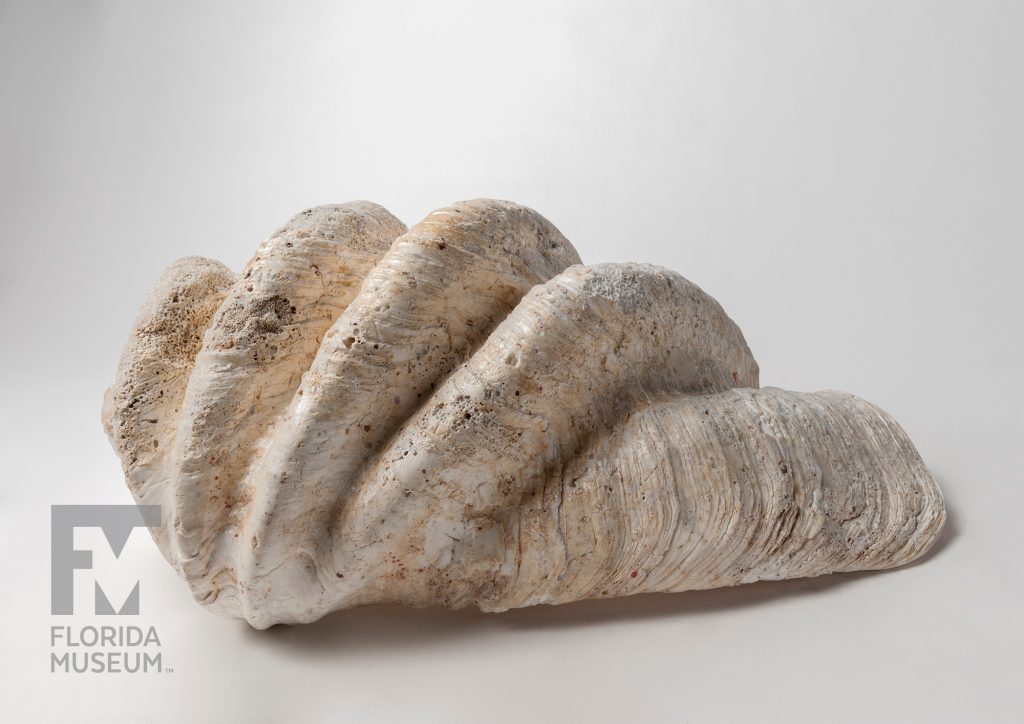Giant Clams can grow to be huge in nutrient-poor waters due to the help of tiny photosynthetic algae (zooxanthellae) that live in their body. The zooxanthellae gain protection by living on the giant clam, while the clam gains the carbon fixed by photosynthesis.
Summary
Giant Clam (Tridacna gigas)
From the Indo-Pacific
Collection
Story
Giant Clams are some of the most conspicuous animals in shallow water coral reefs in the Pacific and Indian oceans. Reaching lengths of 4 feet and weights of nearly 500 pounds during their century-long lifespans, they are the largest of all clams.
Like most clams, they feed on small particles filtered from the water. But unlike most clams, they also harbor symbiotic zooxanthellae. These small, plant-like organisms use sunlight to make food which can be shared with the clam host. This symbiotic relationship allows Giant Clams to achieve remarkable size in the nearly crystal-clear waters of coral reefs where there is very little food to filter.
Giant Clams gape their shells, showing brightly colored blue, green and yellow tissue that is often sparkly and iridescent. These bright colors and iridescence are the result of iridocyte cells that filter light, sending beneficial wavelengths deep into the clam’s tissues, providing energy for food-producing zooxanthellae, while at the same time, reflecting back harmful wavelengths. Giant Clams are providing information on how to manipulate light that might be very important for our development of solar power.
Unfortunately, over-harvesting of clams for food has reduced population sizes and has led to local extinctions on several Pacific island groups.
John Slapcinsky
Collection Manager, Invertebrate Zoology*
Florida Museum of Natural History
Exhibit
On display Sept. 23, 2017-Jan. 7, 2018, Rare, Beautiful & Fascinating: 100 Years @FloridaMuseum celebrated the Museum’s rich history. Each Museum collection was asked to contribute its most interesting items and share the stories that make them special. Though the physical exhibit is closed, this companion website remains online, providing an opportunity to experience the Florida Museum’s most treasured specimens.
Exhibit Area: Objects Tell Stories
Theme: Surprising Biodiversity
 Want to see more? Explore more than 300 breathtaking color photos of plants, animals, fossils and cultural heritage materials from the Florida Museum of Natural History’s collections in the award-winning book All Things Beautiful available from the University Press of Florida.
Want to see more? Explore more than 300 breathtaking color photos of plants, animals, fossils and cultural heritage materials from the Florida Museum of Natural History’s collections in the award-winning book All Things Beautiful available from the University Press of Florida.
*This title was accurate at the time the exhibit was on display in 2017. Please visit the collection website to verify current staff and student information.



